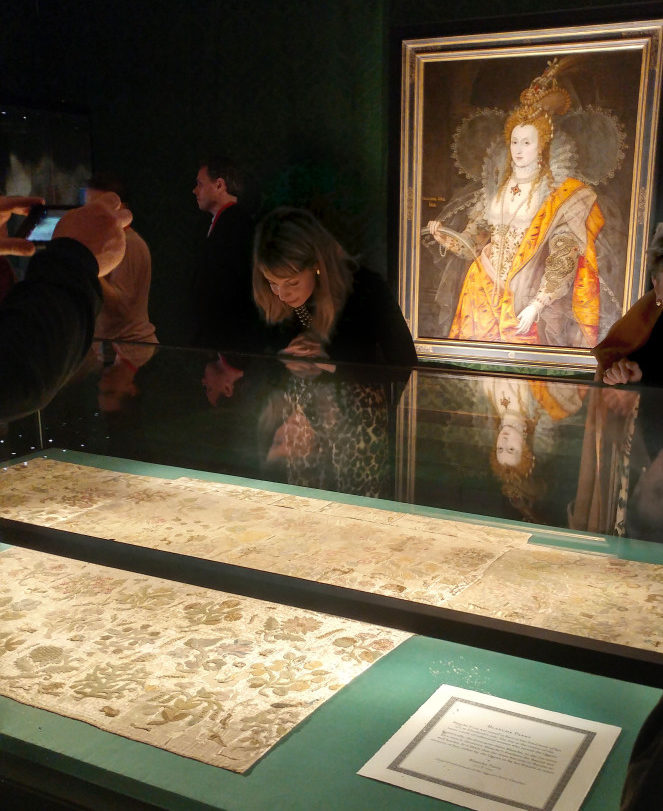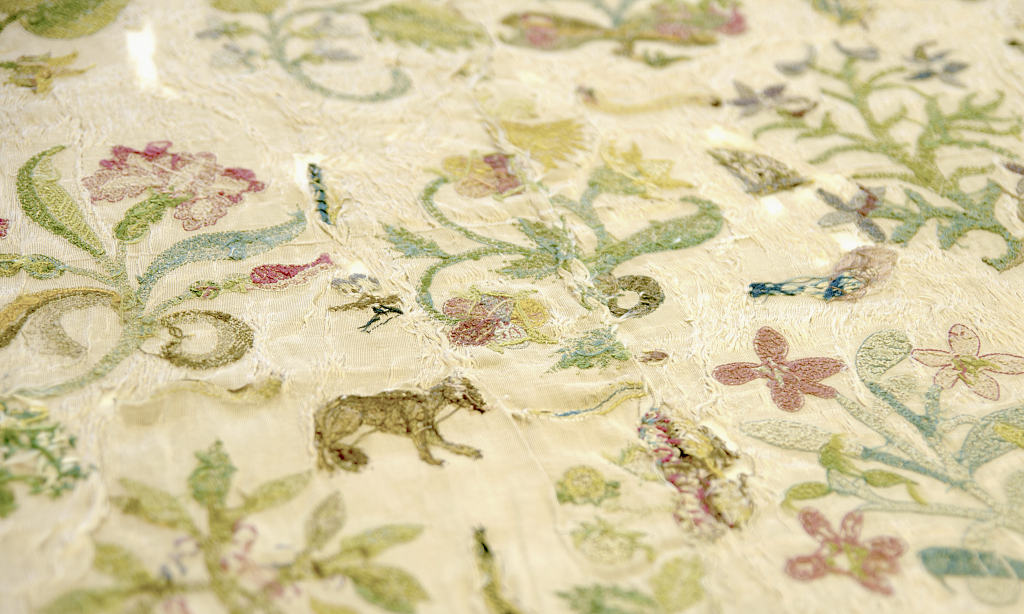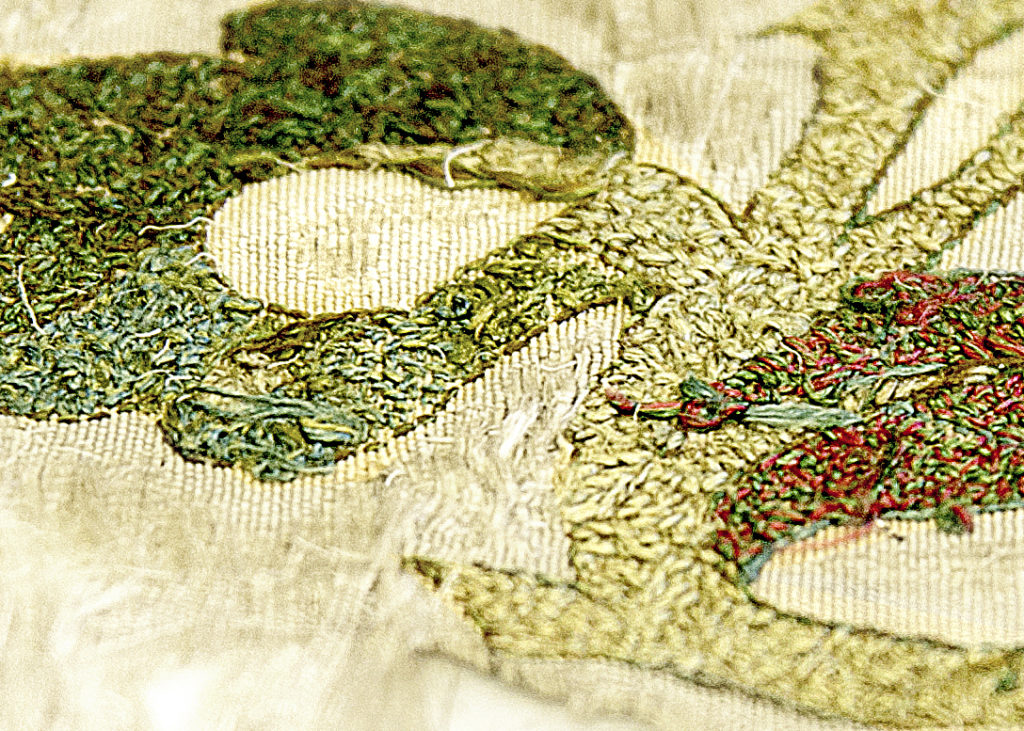The Bacton Altar Cloth is an extraordinary example of what appears to be very high quality English late 16th or early 17th-century embroidery, in polychrome silks and gold wrapped threads worked upon a cream-coloured silver chamblet silk (or cloth-of-silver). This textile, which may once have formed part of a garment of some kind, has been cut and reworked at some point in its long life into the form of an altar cloth, which for many years performed its service at the church of St Faith’s in the small town of Bacton, in Herefordshire. It was later removed from the altar and framed behind glass, and hung upon the wall of the church to be admired by visitors. Such visitors included Janet Arnold, who wrote about the Altar Cloth in her magnum opus, Queen Elizabeth’s Wardrobe Unlock’d, in 1988, and in 2015, Eleri Lynn, curator for Historic Royal Palaces.
Lynn oversaw the relocation of the Bacton Altar Cloth from Bacton to the conservation studios at Hampton Court, where extensive cleaning and conservation took place. The Altar Cloth went on display to the public at Hampton Court in October 2019, alongside the ‘Rainbow’ portrait of Elizabeth I, on loan from its home at Hatfield House in Hertfordshire. The opportunity to observe both the painting and the textile close together gave viewers a chance to see first hand the striking resemblance between the design of the embroidery on the cloth, with that of the bodice the queen wears in the portrait.



The original beauty of the Bacton Altar Cloth is clear, even though the surface has faded and much of the ground fabric has suffered the effects of time. However, a better sense of the original vibrancy of the coloured silks of the embroidery can be seen on the back of the fabric. Here much of the original colour of the embroidery threads is preserved, having been hidden from sunlight and protected from wear.
The Bacton Altar Cloth is a truly fascinating and beautiful textile survival, which will be explored on this site over the next few months…so stay tuned for more.



